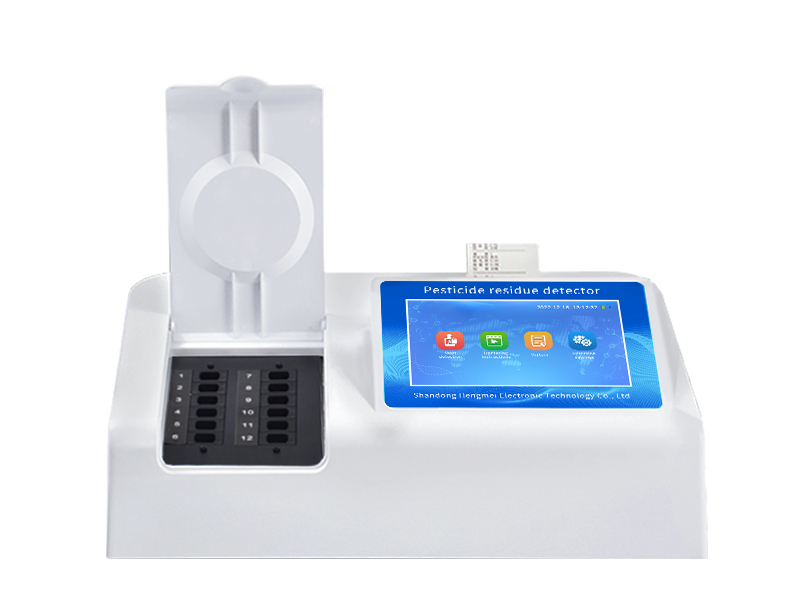The pesticide residue tester adopts the principle of enzyme inhibition rate colorimetry and is specifically used for rapid screening of organophosphorus and carbamate pesticide residues in agricultural products such as fruits and vegetables. With its precise detection performance and convenient operation characteristics, the instrument has become an important tool for ensuring the quality and safety of agricultural products.

The pesticide residue tester can use acetylcholinesterase and butyrylcholinesterase for detection, which can meet the detection requirements of different standards. The instrument adopts a 12-channel parallel detection design, which supports the simultaneous processing of multiple samples. Each detection channel works independently without interfering with each other, significantly improving the detection efficiency. In actual applications, the instrument mainly serves three scenarios:
1. Source quality control
In the fruit, vegetable and tea production base, the pesticide residue tester can screen pesticide residues in agricultural products before harvesting. Through the built-in database of more than 100 vegetable names, farmers can quickly obtain test results to guide scientific use of drugs and safe harvesting.
Circulation link supervision
Agricultural wholesale markets and supermarkets use pesticide residue testers for incoming acceptance and daily sampling. The 7-inch touch screen displays the test results intuitively. With the automatic judgment function, the test can be completed within 3 minutes and a report containing complete information such as the testing agency and sample name can be printed.
Terminal consumption safety guarantee
In school canteens, restaurants and other places, the pesticide residue tester can quickly screen food before processing. Its portable design and GPRS/WiFi data transmission function enable the test data to be uploaded to the supervision platform in real time.
The pesticide residue tester uses imported ultra-bright LED light sources and intelligent constant current voltage stabilization technology to ensure detection stability. The temperature drift of the light source is less than 0.5% during continuous operation. The multi-core processor (1.88GHz) ensures data processing speed and makes the detection process more efficient. It is particularly worth mentioning that its automatic light intensity calibration function and the design that can turn off idle light sources not only ensure detection accuracy, but also extend the service life of the equipment.
Address of this article:http://www.hmfoodtesting.com/article/49.html


 Current
location:
Current
location:





